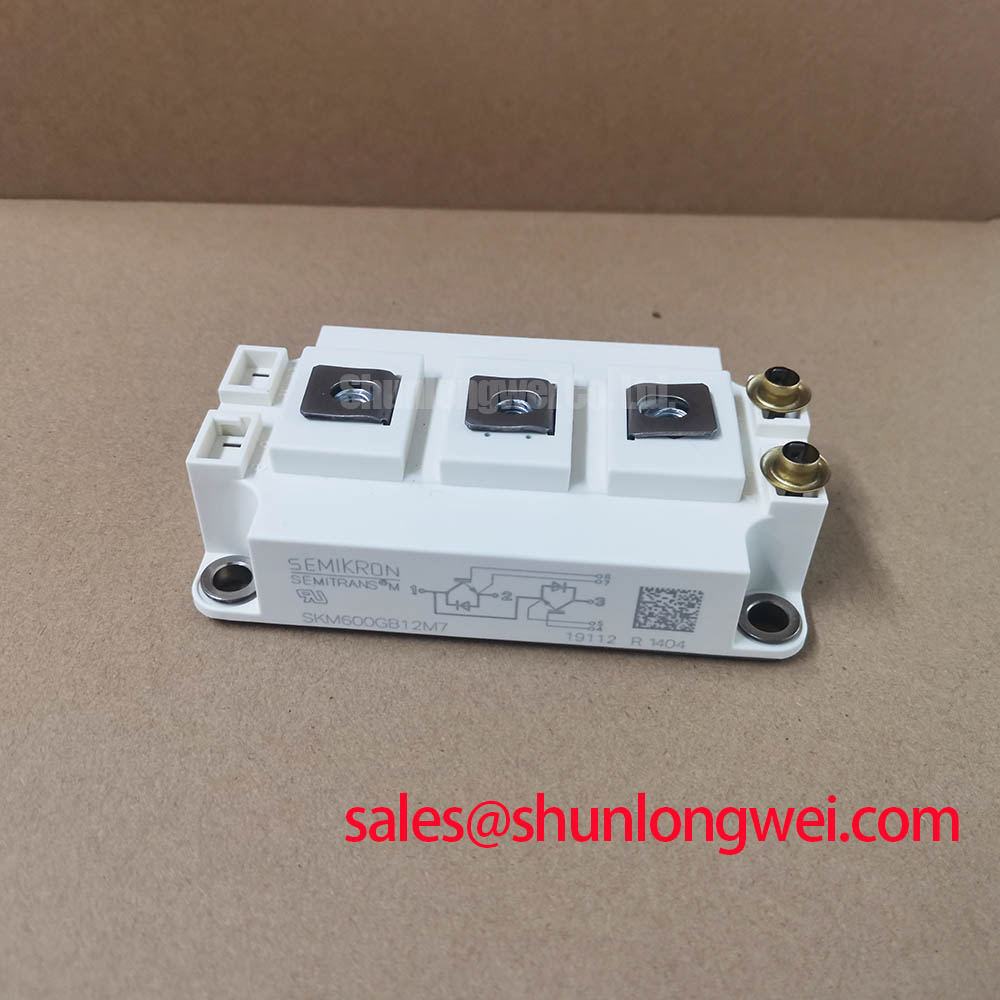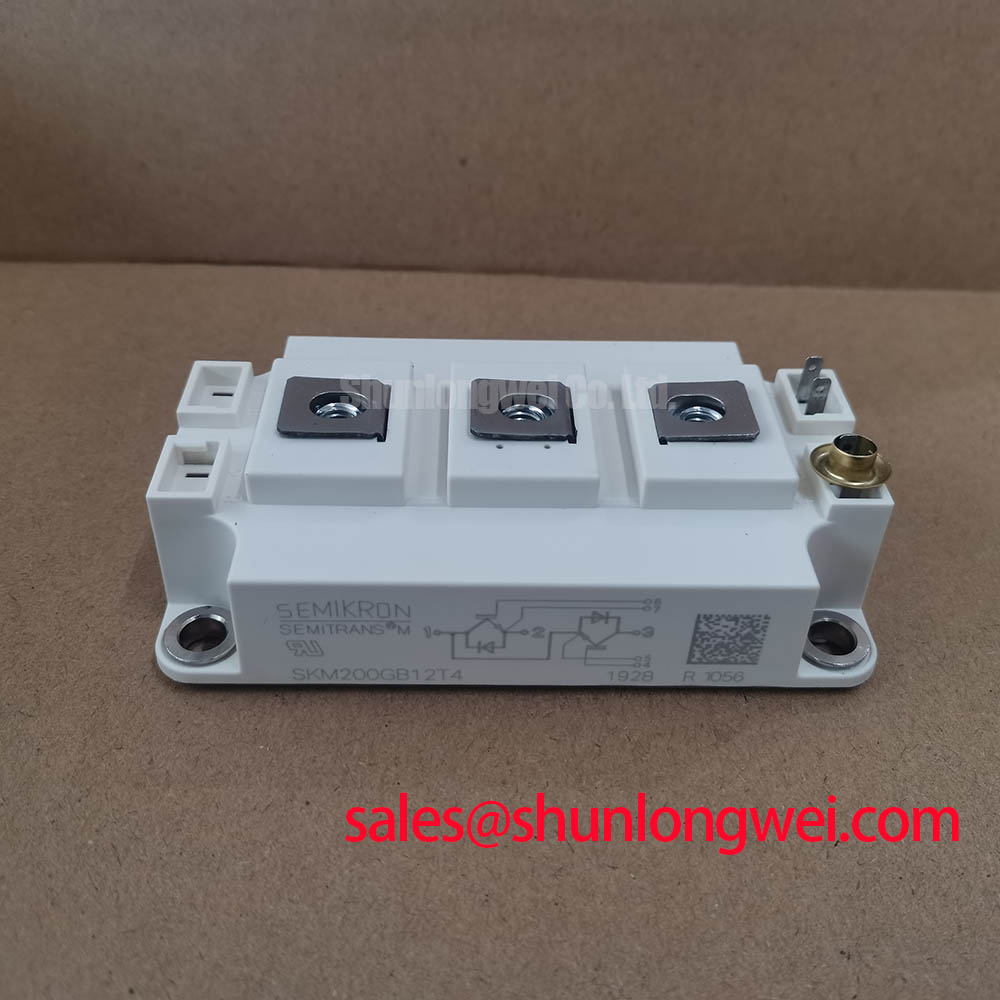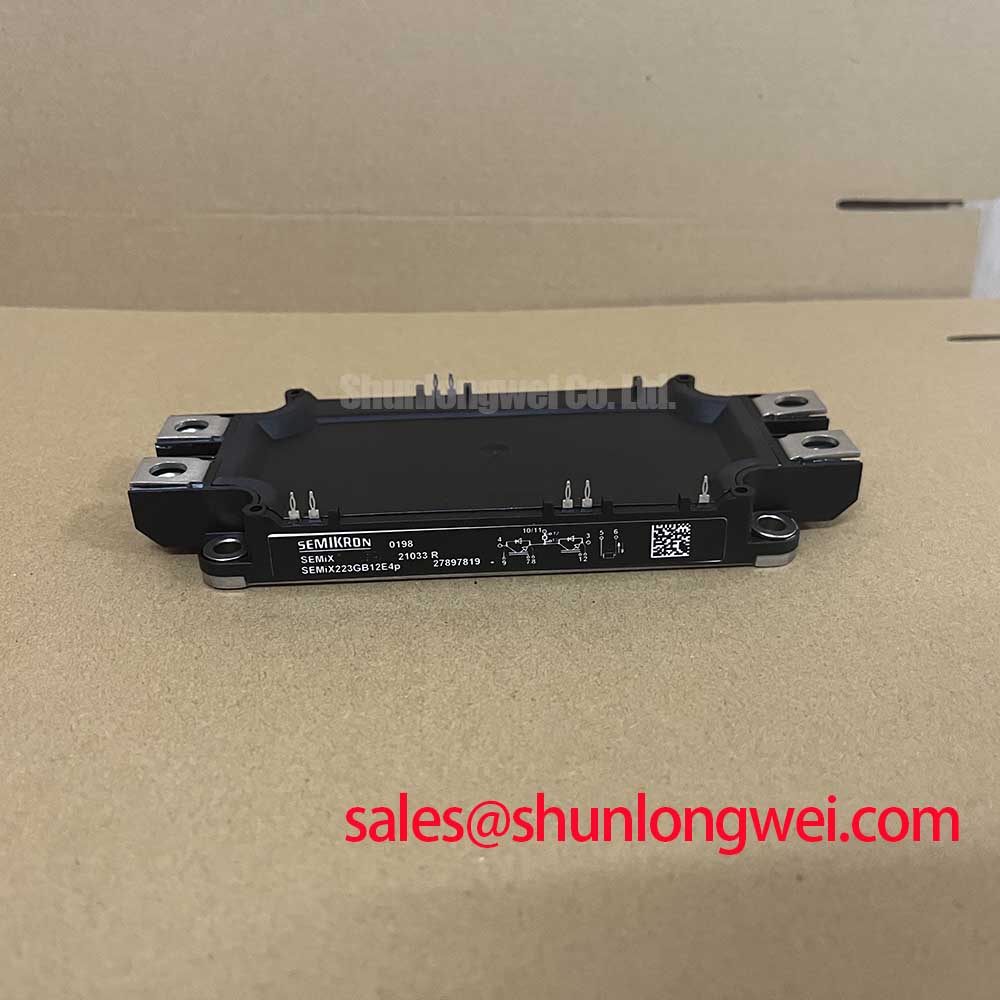Content last revised on November 18, 2025
SKM50GB12V: Engineering Deep Dive into a 1200V Trench Gate IGBT Module
Reliability and Efficiency in High-Frequency Power Conversion
The SKM50GB12V is a high-performance IGBT module designed for robust power conversion, delivering a precise balance of low switching losses and high operational reliability. Engineered with 6th generation V-IGBT trench gate technology and a complementary CAL4 soft-switching diode, this module provides the performance necessary for demanding inverter, UPS, and welding applications. Key specifications include: 1200V collector-emitter voltage, 50A nominal collector current, and a maximum junction temperature of 175°C. The design emphasizes low switching losses at high di/dt rates and enhanced power cycling capability, directly addressing the need for both efficiency and long-term durability in modern power systems. For industrial drives requiring higher current capabilities, the related SKM75GB128D provides a similar voltage class with increased current handling.
Key Parameter Overview
Decoding the Specs for Enhanced Thermal Performance
The electrical and thermal characteristics of the SKM50GB12V are tailored for high-efficiency switching. The low typical VCE(sat) of 2.18V at nominal current and Tj=150°C ensures minimal conduction losses, a critical factor in overall system efficiency. This performance is built upon an insulated copper baseplate featuring Direct Bonded Copper (DBC) technology, which provides superior thermal conductivity and electrical isolation. The table below highlights key parameters that are crucial for thermal modeling and gate drive design.
| Parameter | Condition | Value |
|---|---|---|
| Collector-Emitter Voltage (VCES) | Tj = 25 °C | 1200 V |
| Continuous Collector Current (IC) | Tc = 80 °C, Tj = 175 °C | 59 A |
| Nominal Collector Current (ICnom) | - | 50 A |
| Collector-Emitter Saturation Voltage (VCE(sat)) | IC = 50 A, Tj = 150 °C | 2.18 V (typ.) |
| Total Switching Energy (Eon + Eoff) | IC = 50 A, VCC = 600V, Tj = 150 °C | 9.5 mJ (typ.) |
| Thermal Resistance, Junction to Case (Rth(j-c)) | per IGBT | 0.58 K/W |
| Short Circuit Withstand Time (tpsc) | VGE ≤ 15 V, Tj = 125 °C | 10 µs |
| Maximum Junction Temperature (Tj) | - | 175 °C |
Download the SKM50GB12V datasheet for detailed specifications and performance curves.
Application Scenarios & Value
System-Level Benefits in AC Inverter Drives and UPS Systems
The SKM50GB12V IGBT module is particularly well-suited for applications where efficiency and reliability are paramount. Its design provides tangible benefits in systems like Variable Frequency Drives (VFDs), Uninterruptible Power Supplies (UPS), and electronic welding equipment.
Consider the challenge in a mid-power AC inverter drive: managing thermal load while maintaining fast, clean switching to minimize motor ripple and audible noise. The SKM50GB12V directly addresses this by combining its 6th generation trench V-IGBT with a CAL4 freewheeling diode. This combination is optimized for "soft switching," which significantly reduces turn-off energy loss (Eoff). This low Eoff is crucial; it means less waste heat is generated with each switching cycle. For an engineer, this translates directly to a smaller, more cost-effective heatsink, enabling a more compact and power-dense overall inverter design. The module's enhanced power cycling capability further ensures it can withstand the repetitive thermal stresses inherent in motor start/stop operations, contributing to a longer service life for the entire drive system.
Technical Deep Dive
A Closer Look at the V-IGBT and CAL4 Diode Synergy
The core of the SKM50GB12V's performance lies in the synergy between its two key silicon components: the 6th generation Trench V-IGBT and the 4th generation CAL (Controlled Axial Lifetime) freewheeling diode. This isn't just a pairing of a switch and a diode; it's an optimized system designed to minimize losses, particularly in hard-switching topologies common in motor drives. The V-IGBT structure provides a low on-state voltage drop, akin to having a wider pipe for current to flow through, which reduces conduction losses. However, its real strength is revealed during switching. When the IGBT turns off, the CAL4 diode must take over the load current rapidly and smoothly. The "soft recovery" characteristic of the CAL4 diode is essential here. It prevents large voltage overshoots and oscillations, acting like a shock absorber for the electrical current. This controlled behavior not only reduces the turn-on losses in the IGBT during the next cycle but also lowers electromagnetic interference (EMI), simplifying the system's filtering requirements and helping engineers meet standards like IEC 61800-3 more easily.
Frequently Asked Questions (FAQ)
What is the primary benefit of the CAL4 diode technology in the SKM50GB12V?
The CAL4 diode is engineered for soft and fast reverse recovery. This characteristic is critical for reducing the turn-on losses (Eon) of the opposing IGBT in the half-bridge configuration and minimizing electromagnetic interference (EMI), leading to higher system efficiency and simplified filter design.
How does the Direct Bonded Copper (DBC) baseplate contribute to the module's reliability?
The DBC baseplate provides excellent thermal conductivity and high electrical isolation. It creates a low-stress interface between the silicon chips and the heatsink, improving heat dissipation and enhancing the module's ability to withstand repeated temperature fluctuations (power cycling), thereby increasing its operational lifetime.
What does the 10µs short-circuit withstand time imply for system design?
A short-circuit withstand time of 10µs at Tj=125°C provides a critical safety window for the system's protection circuitry. It ensures that the gate drive and control system have sufficient time to detect a fault condition (like a motor phase-to-phase short) and safely turn off the IGBT before catastrophic failure occurs, which is a key requirement for building a robust and safe Servo Drive.
Is the integrated gate resistor sufficient for all designs?
The integrated 4.0 Ω gate resistor provides a baseline for gate current control. However, for designs requiring fine-tuning of switching speed to manage EMI or reduce voltage overshoot, an external gate resistor is typically used in series to achieve the desired dV/dt and di/dt characteristics for the specific application.
Engineering Perspective
From an engineering standpoint, the SKM50GB12V represents a strategic component choice for power systems operating up to approximately 30 kW. Its value proposition is centered on reducing system-level costs associated with thermal management and EMI compliance. The deliberate pairing of a low-loss V-IGBT with a soft-recovery CAL4 diode allows designers to push operating frequencies higher without incurring severe efficiency penalties, enabling the use of smaller and lighter magnetic components. This focus on switching performance, combined with the module's proven reliability in the SEMITRANS 2 package, makes it a workhorse for applications where long-term, efficient power conversion is a primary design objective. For lower power requirements within the same family, designers may consider the BSM35GP120 as a potential option.












